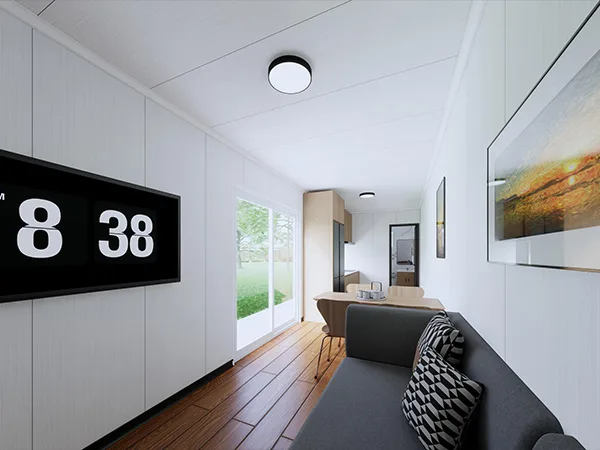
The Appeal of Shipping Container Houses
Shipping container houses have gained popularity due to their durability, cost-effectiveness, and adaptability. Made from steel, these structures are built to withstand harsh conditions, making them perfect for various climates. Additionally, repurposing shipping containers reduces construction waste, aligning with sustainable living trends. A modern shipping container house can be designed with sleek finishes, large windows, and open floor plans, blending industrial aesthetics with contemporary comfort.
Designing a Modern Shipping Container House
A modern shipping container house emphasizes clean lines, energy efficiency, and smart space utilization. Architects often incorporate high-quality insulation, solar panels, and energy-efficient windows to enhance comfort. The use of multiple containers allows for creative layouts, including multi-story designs. Whether you prefer a minimalist studio or a spacious family home, a well-planned shipping container home design can meet your needs while maintaining a stylish and functional appeal.
Creating a Tiny House in a Shipping Container
For those embracing minimalism, a tiny house in a shipping container offers an affordable and eco-conscious living solution. These compact homes maximize every square foot with built-in storage, foldable furniture, and lofted sleeping areas. Despite their small size, they can include all the essentials—kitchens, bathrooms, and living spaces. The mobility of container homes also allows owners to relocate easily, making them perfect for adventurous individuals or those seeking temporary housing.
Innovative Shipping Container Home Designs
The versatility of shipping container home designs allows for endless creativity. From rooftop gardens to modular expansions, these homes can be tailored to fit any lifestyle. Some designs feature glass walls for panoramic views, while others combine multiple containers to create unique geometric shapes. Whether you want an off-grid retreat or an urban dwelling, innovative designs ensure your home stands out while remaining functional and sustainable.
Frequently Asked Questions About Shipping Container Houses
What are the advantages of a shipping container house?
Shipping container houses are cost-effective, durable, and eco-friendly. They require fewer building materials than traditional homes and can be constructed faster. Their steel frames provide excellent resistance to extreme weather, making them a long-lasting housing solution.
How customizable are shipping container home designs?
Extremely customizable! A modern shipping container house can be designed to include any feature, from high-end kitchens to smart home technology. Containers can be stacked, combined, or modified to create unique layouts tailored to your preferences.
Are shipping container homes energy-efficient?
Yes, with proper insulation and energy-saving features like solar panels and double-glazed windows, a tiny house in a shipping container can be highly energy-efficient, reducing utility costs and environmental impact.
Can I build a multi-story shipping container home?
Absolutely! Multiple containers can be stacked vertically or horizontally to create multi-level homes. Engineers ensure structural stability, making them safe and functional for families or larger living spaces.
How long does it take to build a shipping container house?
Compared to traditional homes, shipping container home designs can be completed in a fraction of the time—often within a few months, depending on complexity. Prefabricated options can speed up the process even further.
From sleek modern shipping container houses to compact tiny houses in shipping containers, these innovative dwellings offer endless possibilities. Their affordability, sustainability, and design flexibility make them an excellent choice for modern living. Whether you’re downsizing or building a dream home, shipping container home designs provide a unique and practical solution for the future of housing.
Last updated: 2025-09-01